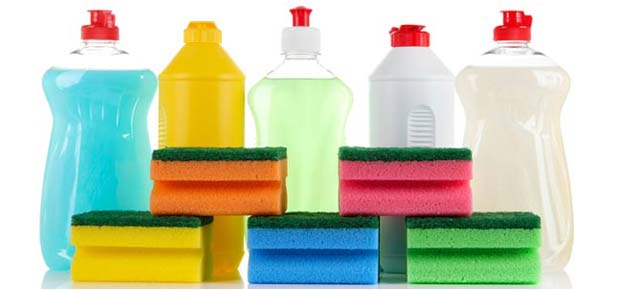Both soaps and detergents are cleansing products that we frequently use in our daily lives. We use these products to clean our skin and hands wash our clothes without really paying any attention to how they work or is there any difference between them. Although both the soap and detergents perform same action, i.e. cleansing, there is a significant difference between them. We can differentiate the soaps and detergents on the basis of several factors, like - Ingredients, structure, properties, and more.
Mentioned below are some factors, on the basis of which we can differentiate soaps and detergents -
Although both are surfactants (or surface active agents that means a washing compound, which mixes with grease and water), soaps and detergents are not the same thing. Soap manufacturing process is different from that of detergent making. Soaps are usually manufactured using natural materials while detergents are generally synthetic that were developed during World War II, when there was scarcity of oils that are used to make soaps.

Usually labeled as beauty, facial, or cleansing bar soaps, true soaps are generally produced with natural products (soap and lye) and require very less energy in the manufacturing process. It is possible to make soaps without having leftover by-products, which tend to go to the landfill, and the soap, which flows down the drain while cleaning is biodegradable. These soaps have a pH of 9.5 to 10 (alkaline) that makes them effective cleansing agents and eliminates the requirement for harmful antibacterial chemicals and preservatives.
However, some manufacturers use beef tallow (fat), in soap making, as this is an unused byproduct of meat processing, which can be obtained very cheaply. While saponified beef tallow can be used to make a satisfactory soap, there are some substances in tallow, which that do not saponify, and may cause acne and skin breakouts.
Superior quality soaps are produced with oils, like - palm, castor, coconut, or olive oils, and retain the natural glycerin, rather removing it and selling it for profit, which bulk manufacturers generally do.
Detergents are generally made from petroleum products with surfactants, foaming agents and alcohol being their primary constituent. To remove the disagreeable odour of these chemicals, detergents are heavily scented with cheap, synthetic and artificial fragrances. Detergents ingredients also include preservatives and antibacterial agents (to increase their shelf life) that make the detergents frequent causes of allergies and reactions. Soap Structure
StructureAll of the soaps are fatty acid salts, which can be categorized by
Any surfactant (or surface-active agent), that is not soap is a detergent.
The most important difference between a soap and detergent is their behavior in water. A big drawback of washing with soap is that it forms a scum in hard water, which is not easy to clean and is known to turn laundry into a hue.
Soaps form a scum in hard water, which is not easy to rinse away and is known to turn laundry, a grayish hue. The insoluble film that soap leaves can leave a residue on the laundry same like as would see in a shower stall where hard water is present. On the other hand, detergents react less to minerals in water hence does not leave this residue. In case you are living in an area, where the water is soft, a soap will work satisfactorily, but even then a gradual build-up of calcium and magnesium ions (also called 'curd') will be left on the fabric.
Another important difference between soaps and detergents is the sensitivity of soaps to acidic conditions. On putting a soap into an acidic (pH<4.5), it protonates the carboxylate group.
The protonation of oleate ion to form oleic acid forms an uncharged, insoluble molecule that is not surface-active.
The protonated soap molecule does not have a charged head, and so it becomes insoluble in water. The soap molecules precipitate out thereby producing a cloudy mixture that leads to the formation of a scum. Hence, we can say soaps are not suitable for uses in acidic conditions.

If you have decided to make soap at home, you will need soap making supplies in the form of raw materials, soap making equipment & tools ...
Read More
Someone has rightly said that clothes are not just clothes. They form an integral part of a person's personality and tell a lot about their nature and...
Read MoreCleansing products play an important role in the daily lives of people.
Both soaps and detergents are cleansing products that we frequently use in our
Soap is designed as a product to be used once and then flushed down the drain...